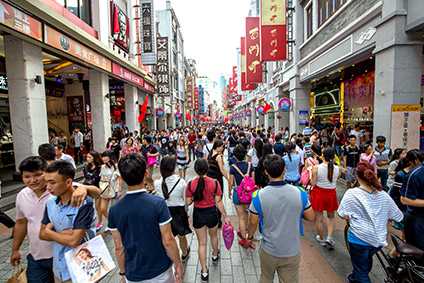
The Asia-Pacific (APAC) region is set to account for over 40% of the global menswear and womenswear sales by 2024, thanks to its high population density, increasing Internet penetration, economic growth and the increased spending ability of consumers.
The forecast from leading data and analytics company GlobalData also notes that mature markets such as the Americas and Europe will see their share continue to fall.
How well do you really know your competitors?
Access the most comprehensive Company Profiles on the market, powered by GlobalData. Save hours of research. Gain competitive edge.

Thank you!
Your download email will arrive shortly
Not ready to buy yet? Download a free sample
We are confident about the unique quality of our Company Profiles. However, we want you to make the most beneficial decision for your business, so we offer a free sample that you can download by submitting the below form
By GlobalData“The APAC countries are catching on to fashion trends with growing awareness of international brands through digital media platforms,” says Ankita Roy, retail analyst at GlobalData. “Collective factors such as economic growth, fashion awareness and increasing propensity to consume offer significant growth opportunities in womenswear and menswear sales in APAC countries, especially India and China. To capitalise on this, both domestic and international retailers must launch aggressive market strategies.”
Covid-19 has changed shopping habits across demographics. Retailers are including knitwear in their new collections to match consumers’ preferences for comfort as the fabrics are soft, comfortable and give a formal silhouette to otherwise baggy clothes.
Against this backdrop, knitwear and sweatshirts will see a significant increase in value by US$14.3bn and US$8.8bn in womenswear and menswear markets respectively during 2019-2024. APAC alone accounts for 99.8% and 80.9% of this growth, with mature European and North American markets registering a strong decline in 2021 due to the impact of Covid-19 – and are not expected to reach pre-Covid levels until 2024.
“Retailers must be pro-active in launching relevant and new products to engage with consumers and avoid the risk of losing out to competitors,” Roy continues.
Global womenswear and menswear sales through the online channel are forecast to grow at a compound annual growth rate (CAGR) of 10.6% and 11.1% respectively during 2019-24. The online share of menswear and womenswear sales in APAC is expected to remain heightened through 2024, accounting for 40.8% and 44.9% of menswear and womenswear markets respectively.
“Brands must continue to interact with customers through digital and social media platforms. To further increase their presence, brands can tie-up with popular social marketplaces like Instagram and Facebook to sell their products online. Initiatives such as live-streamed fashion shows and online displays of new launches will be instrumental in creating a market buzz in the post-Covid era. Retailers must keep exploring new ways to directly engage with shoppers, as the pandemic highlighted the significance of e-commerce more than ever before.”




